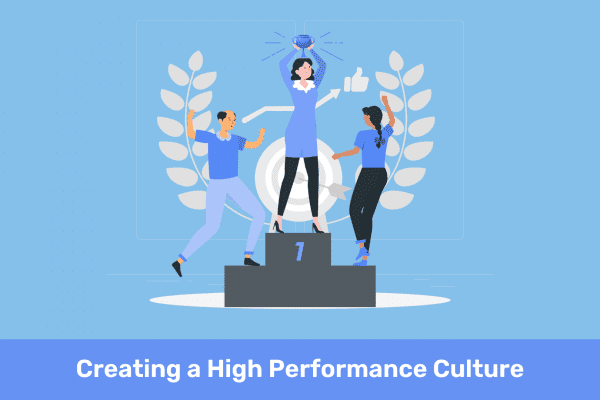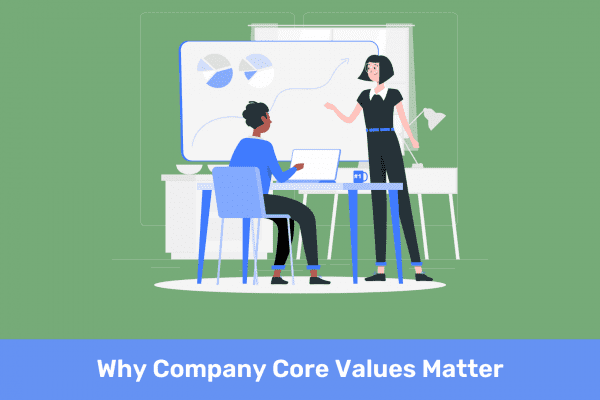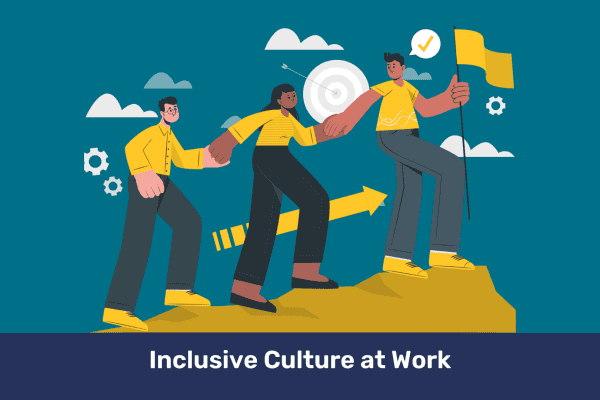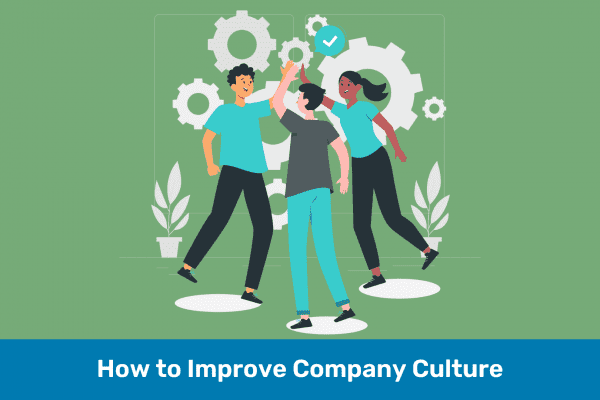Introduction
Imagine a workplace where every decision and strategy starts with one question: “How will this impact our people?” This is the essence of a people-first culture. It’s a philosophy that interweaves the well-being of employees into the very fabric of a company’s operations. More than a strategy, it’s a commitment to valuing people as the organization’s most vital asset.
The ripple effects of adopting a people-first approach are profound. For instance, Gallup reports a 23% increase in profitability for businesses that deeply engage their workforce. This statistic isn’t just impressive; it highlights the powerful impact of prioritizing employee engagement on a company’s bottom line.
In this guide, we delve into the transformative power of a people-first culture. We’ll explore practical steps and strategies leaders can use to nurture this environment, creating not just a thriving business, but a workspace where employees feel truly valued and empowered. Join us as we navigate the path to a more human-centered approach in the business world, where the success of an organization is measured not just in numbers, but in the growth and satisfaction of its people.
Understanding the People-First Culture

Key Characteristics of a People-First Culture:
A people-first culture prioritizes the well-being and development of its employees above all else. This approach isn’t just about offering better benefits or work-life balance; it’s about embedding a deep respect for personnel into every aspect of the organization’s operations. Here are some key characteristics that define a people-first culture:
-
- Empathy and Support: Management practices empathy actively, listening to employee concerns and striving to understand their challenges and needs.
- Transparency: Open and honest communication is standard, fostering trust and clarity between all levels of the organization.
- Employee Empowerment: Employees are given the autonomy to make decisions, which not only enhances their engagement but also boosts their confidence and sense of responsibility.
- Recognition and Appreciation: Regular recognition of efforts and achievements is commonplace, ensuring that employees feel valued for their contributions.
- Inclusivity: A strong commitment to diversity and inclusion ensures that all employees feel welcomed, respected, and valued regardless of their background.
- Development Opportunities: Continuous learning and development are integral, providing employees with the tools and skills needed to grow both personally and professionally.
How It Differs from Traditional Corporate Cultures:
Traditional corporate cultures often prioritize the bottom line, with a strong focus on efficiency, profitability, and shareholder value at the potential expense of employee satisfaction and engagement. In contrast, a people-first culture focuses on the human elements of business. The belief is that a satisfied, well-cared-for employee will be more productive, which in turn benefits the organization as a whole. Here are a few ways a people-first culture differs:
-
- Decision-Making: In traditional cultures, decisions are often top-down, while in a people-first environment, employee input is encouraged and valued at all levels.
- Performance Metrics: Traditional cultures might measure success strictly through financial outcomes and productivity metrics. A people-first culture considers employee satisfaction, retention rates, and well-being as key indicators of success.
- Leadership Style: Leadership in traditional corporate environments may be authoritative and hierarchical, whereas in people-first cultures, leadership tends to be more collaborative and supportive.
Understanding these characteristics and distinctions helps leaders to better implement and cultivate a people-first culture within their own organizations, driving not just business success but also creating a more fulfilling work environment.
The Role of Leadership in Shaping Culture

The Impact of Leadership Style on Fostering a People-First Environment:
Leadership style plays a pivotal role in shaping and sustaining a people-first culture. The approach leaders take can either foster an environment where employees feel valued and motivated or one where they feel overlooked and expendable. Leaders who prioritize empathy, openness, and support tend to cultivate a more engaged and committed workforce. This style of leadership encourages trust and respect, which are crucial for a people-first atmosphere.
Here are specific ways leadership styles influence a people-first culture:
-
- Empathetic Leadership: Leaders who show empathy and genuinely care about their employees’ personal and professional well-being inspire loyalty and high morale among their teams.
- Democratic Leadership: This style involves sharing decision-making with the team, which can significantly enhance employees’ sense of ownership and satisfaction.
- Transformational Leadership: Leaders who inspire and motivate their employees to achieve more than they originally thought possible can drive significant changes in the workplace culture.
Leading by Example: Demonstrating Care and Respect for Employees:
Leading by example is perhaps the most effective method by which leaders can embed a people-first culture within their organization. Actions speak louder than words, and when leaders actively demonstrate care and respect, they set a powerful precedent for others to follow.
Here are key practices for leaders looking to lead by example:
-
- Personal Involvement: Taking time to get to know employees, understanding their challenges, and being involved in their professional development.
- Visibility and Accessibility: Being physically and emotionally present, and making oneself available to discuss issues and achievements.
- Consistent Recognition: Regularly acknowledging and rewarding efforts and accomplishments in a meaningful way.
- Prioritizing Well-Being: Implementing and advocating for policies that promote mental, emotional, and physical health.
- Respectful Communication: Maintaining a tone of respect in all communications, regardless of the employee’s position within the company.
By integrating these practices into their daily routines, leaders not only foster a supportive and inclusive workplace but also drive the overall performance of the organization by boosting employee engagement and satisfaction. This approach demonstrates a commitment to building a culture where people feel genuinely valued and respected, which is essential for a people-first environment.
Creating a Supportive and Inclusive Environment

Strategies for Building an Inclusive Workplace:
Creating an inclusive workplace is a fundamental aspect of a people-first culture. It involves more than just welcoming diverse talents; it’s about making everyone feel valued and ensuring they have equal opportunities to thrive. Here are some effective strategies to help build an inclusive workplace:
-
- Comprehensive Diversity Training: Conduct regular training sessions that not only address diversity and inclusion but also cover unconscious bias and cultural competency. These sessions help employees understand different perspectives and foster a more inclusive environment.
- Diverse Hiring Practices: Implement hiring practices that are designed to attract a diverse candidate pool. This can include posting job listings in diverse forums, using diverse hiring panels, and ensuring job descriptions are inclusive.
- Clear Anti-Discrimination Policies: Establish and enforce clear policies that prohibit discrimination and harassment. Ensure these policies are communicated effectively to all employees and that there are straightforward procedures for reporting violations.
- Employee Resource Groups (ERGs): Support the formation of ERGs for various groups, such as women, LGBTQ+ employees, and racial minorities. These groups can provide support networks and contribute to personal and professional development.
- Accessible Work Environment: Ensure that the workplace is physically and digitally accessible to people with disabilities. This includes accommodating assistive technologies and providing necessary adjustments to support all employees’ health and productivity.
The Importance of Diversity and Equality in a People-First Culture:
Diversity and equality are not just beneficial for the individuals involved; they are crucial for the health and success of the entire organization.
Here’s why they are so important in a people-first culture:
-
- Broader Perspectives and Innovation: Diverse teams bring a wide range of experiences and viewpoints, which can lead to more creative solutions and innovations. This diversity of thought is critical in a competitive business environment.
- Improved Employee Engagement: When employees see that their workplace is committed to diversity and equality, they feel more valued and respected. This boosts their engagement and their likelihood of recommending their workplace to others.
- Enhanced Reputation: Organizations known for their commitment to diversity and inclusion are often viewed more favorably by the public. This can enhance their brand reputation and attract top talent.
- Compliance and Ethical Leadership: Embracing diversity and promoting equality help ensure compliance with various laws and regulations. It also positions the organization as an ethical leader in its industry.
By implementing these strategies, organizations can create not only a more inclusive environment but also a supportive atmosphere that respects and values the contributions of every individual. This is essential for fostering a true people-first culture where everyone can succeed.
Employee Well-being and Work-Life Balance

Implementing Policies and Practices that Prioritize Employee Well-being:
A cornerstone of a people-first culture is a deep commitment to the well-being of its employees. Organizations that prioritize the physical, mental, and emotional health of their workforce not only enhance individual employee satisfaction but also boost overall productivity and organizational health. Here are some strategies to prioritize employee well-being:
-
- Comprehensive Health Benefits: Offer robust health care packages that cover a wide range of medical, mental health, and wellness services. This shows employees that their health is a priority.
- Mental Health Resources: Provide access to mental health resources such as counseling services, stress management programs, and workshops on mindfulness and resilience. Promote these resources actively to destigmatize their usage.
- Ergonomic Work Environments: Design workplaces that minimize physical strain and the risk of injury. Include adjustable seating, proper lighting, and quiet spaces for breaks.
- Regular Health and Wellness Programs: Implement regular health and wellness programs that might include fitness classes, nutritional advice, and health screenings to encourage a holistic approach to health.
Encouraging a Healthy Work-Life Balance:
Balancing professional responsibilities with personal life is vital for employee satisfaction and longevity. Here are effective ways to encourage a healthy work-life balance:
-
- Flexible Working Arrangements: Allow flexible working hours and the possibility for remote work where feasible. Flexibility helps employees manage their personal responsibilities alongside their professional ones, reducing stress and increasing job satisfaction.
- Unplugging Policies: Encourage employees to truly disconnect from work during non-work hours by setting expectations about email and communication during evenings and weekends.
- Paid Time Off (PTO) Policies: Offer generous PTO policies and encourage employees to use them. Ensure that taking leave is culturally accepted and supported by management.
- Support for Family Obligations: Provide support for employees with families through benefits like parental leave, childcare assistance, or flexible schedules for school events.
- Employee Support Programs: Introduce programs that assist employees in managing personal issues that might affect their work, such as financial planning services, legal assistance, and elder care resources.
By implementing these policies and actively promoting a culture that values health and well-being, organizations can significantly enhance their employees’ quality of life. This not only aids in retaining talent but also attracts new employees who value a supportive and balanced work environment. Building and maintaining a work culture that prioritizes well-being and balance is an ongoing process but is essential in a people-first workplace.
Open Communication and Employee Feedback

Establishing Effective Two-Way Communication Channels:
Open communication is vital in a people-first culture, as it fosters trust, ensures transparency, and helps identify areas for improvement. Effective communication should be bidirectional, where employees feel heard and management can share insights and directives clearly. Here are strategies to establish and maintain these channels:
-
- Regular Meetings: Hold regular team meetings and one-on-one sessions that allow employees to discuss their projects, challenges, and successes. These meetings should be structured to encourage open dialogue.
- Digital Communication Platforms: Utilize tools such as Slack, Microsoft Teams, or other communication platforms that facilitate easy and instant communication among team members and across departments.
- Suggestion Boxes: Both digital and physical suggestion boxes can be effective ways for employees to provide anonymous feedback or ideas for improvement.
- Management Accessibility: Encourage a culture where senior leaders are approachable and available to staff at all levels. This might involve open office hours, ‘lunch with CEO’ programs, or simply having managers spend time on the floor.
Regularly Gathering and Acting on Employee Feedback:
Regular feedback is a cornerstone of continuous improvement and employee satisfaction in a people-first culture. Actively seeking and thoughtfully responding to feedback demonstrates that an organization values its employees’ insights and is committed to making constructive changes. Here are methods to effectively gather and implement feedback:
-
- Employee Surveys: Conduct regular, anonymous surveys to gather comprehensive feedback on various aspects of the workplace, including job satisfaction, management effectiveness, and workplace culture.
- Feedback Tools: Implement specialized tools designed for real-time feedback and pulse surveys, which can provide ongoing insights into employee sentiment and needs.
- Feedback-Focused Meetings: Dedicate parts of regular meetings to gather feedback on specific issues or ongoing projects. This keeps feedback tied to real work contexts and can lead to immediate actionable insights.
- 360-Degree Feedback: Use 360-degree feedback systems for a holistic view of employee performance and areas for development. This feedback should include input from peers, subordinates, and supervisors.
- Acting on Feedback: Crucially, feedback must be acted upon. Communicate the actions taken in response to feedback to the entire organization. This not only promotes a sense of efficacy among employees but also reinforces the value of their input.
By establishing robust communication channels and a structured feedback system, organizations can ensure that they remain aligned with their employees’ needs and expectations, thereby reinforcing a people-first culture. This approach not only helps in retaining talent but also in driving innovation and improving overall organizational performance.
Recognition and Reward Systems

Designing Recognition Programs that Align with a People-First Philosophy:
In a people-first culture, recognition and rewards are crucial for reinforcing valued behaviors and achievements. Effective recognition programs are tailored to match the ethos of putting people first, ensuring they feel genuinely appreciated and valued. Here are key considerations for designing such programs:
-
- Alignment with Core Values: Ensure that the recognition program reinforces the company’s core values. Recognize behaviors that promote teamwork, innovation, customer service, and any other values that are critical to the company’s identity.
- Inclusivity: Design a program that provides opportunities for recognition at all levels of the organization, from new hires to senior leaders, ensuring that everyone feels included and valued.
- Variability: Offer various types of recognition and rewards to cater to different preferences and motivations among employees. This could include public acknowledgment, monetary rewards, or personal development opportunities.
- Consistency and Fairness: Maintain consistency in how recognition and rewards are given, ensuring the process is transparent and perceived as fair by all employees. Regularity in recognition events also keeps the momentum and morale high.
Various Forms of Employee Recognition and Rewards:
Recognition and rewards can take many forms, each suited to different situations and designed to fulfill various motivational needs. Here are some effective forms of recognition and rewards:
-
- Public Recognition: This can include shout-outs in company meetings, newsletters, or on the company’s social media platforms. Public recognition not only boosts the recipient’s morale but also sets a positive example for the rest of the organization.
- Monetary Rewards: Bonuses, raises, profit-sharing plans, and gift cards are common monetary rewards that can be very effective. They provide tangible appreciation for the employees’ hard work.
- Professional Development Opportunities: Offering opportunities for further education, training, or attending industry conferences can be a highly valued form of recognition that invests in the employee’s future.
- Additional Time Off: Extra vacation days or flexible working arrangements can be a highly appreciated reward that also supports a better work-life balance.
- Personalized Rewards: Tailoring rewards to individual preferences, such as tickets to a concert, a book by a favorite author, or a voucher for a family outing, can make the recognition even more special and meaningful.
- Peer Recognition Programs: Implement programs that allow peers to recognize each other. This can help build a supportive team environment and encourage everyone to contribute to a positive workplace culture.
By implementing a diverse and well-thought-out recognition and reward system, organizations can significantly enhance employee engagement and satisfaction. This approach not only honors individual achievements but also strengthens the collective spirit and commitment to the organization’s goals.
Professional Development and Career Growth
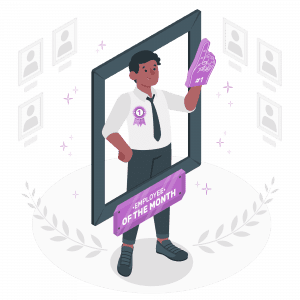
Investing in Employee Development and Growth Opportunities:
A people-first culture prioritizes the continuous development of its employees as a fundamental aspect of its philosophy. Investing in employee development not only enhances individual capabilities but also contributes to the organization’s overall growth and competitiveness. Here are ways organizations can invest in their workforce:
-
- Tailored Training Programs: Offer training programs that are customized to meet the specific needs of employees, whether it’s technical skills, leadership training, or soft skills development.
- Mentorship and Coaching: Establish mentorship programs that pair less experienced employees with seasoned professionals within the organization. This not only facilitates personal and professional growth but also helps in the transfer of institutional knowledge.
- E-Learning Resources: Provide access to online courses and webinars that allow employees to learn at their own pace and according to their own interests. This flexibility encourages continuous learning.
- Support for Continuing Education: Offer tuition reimbursement or financial assistance for employees pursuing relevant degrees, certifications, or workshops that can enhance their professional skills.
- Cross-Functional Training: Encourage employees to participate in projects or tasks outside their usual job functions. This exposure can help employees understand different aspects of the business and develop a more holistic view.
Creating Clear Pathways for Career Progression within the Organization:
Clear career pathways are crucial in a people-first culture as they provide employees with a visible roadmap for advancement within the organization. Here’s how to create and maintain these pathways:
-
- Transparent Career Ladders: Clearly outline the career progression opportunities available within the organization. This should include what each role requires in terms of skills, experience, and performance metrics.
- Regular Career Planning Sessions: Conduct regular meetings between employees and their managers to discuss career goals, review progress, and plan future moves within the company.
- Internal Job Postings: Promote from within whenever possible. Make sure all employees are aware of open positions and encourage them to apply if interested.
- Succession Planning: Identify and prepare potential leaders within the organization through targeted training and responsibilities. This not only helps in smoother transitions but also motivates employees by showing them that they have a future within the organization.
- Performance and Development Reviews: Combine performance appraisals with development discussions, focusing not just on past performance but also on future career aspirations and needed growth areas.
By investing in professional development and creating clear career pathways, organizations can significantly enhance employee satisfaction and retention. This approach not only supports individual career aspirations but also aligns them with the organization’s goals, fostering a mutually beneficial relationship between the employer and the employees.
Promoting Team Collaboration and Community

Encouraging Teamwork and a Sense of Community in the Workplace:
Fostering a strong sense of community and collaboration within the workplace is essential in a people-first culture. It strengthens relationships, enhances communication, and builds a supportive environment that can lead to increased creativity and productivity. Here’s how organizations can encourage this vital aspect:
-
- Collaborative Workspaces: Design the physical and virtual workspace to encourage interaction and collaboration. Open spaces, communal areas, and user-friendly digital platforms can facilitate spontaneous discussions and teamwork.
- Cross-Departmental Projects: Encourage projects that require collaboration across different departments. This not only helps in breaking down silos but also allows for a richer exchange of ideas and perspectives.
- Team Roles Clarification: Clearly define roles within teams to ensure that everyone understands their responsibilities and how they contribute to the group’s objectives. This clarity can enhance team dynamics and efficiency.
- Communication Tools: Implement and promote the use of effective communication tools that support teamwork, whether team members are in the same location or distributed geographically.
Organizing Team-Building and Social Activities:
Team-building and social activities are more than just fun; they are crucial for building trust and camaraderie among team members. These activities can lead to better communication and collaboration in the workplace. Here are some effective ways to integrate these into the organizational culture:
-
- Regular Team-Building Retreats: Organize off-site retreats that are designed to build stronger relationships among team members through structured team-building exercises.
- Social Events: Host regular social events such as lunches, dinners, or happy hours. These less formal settings can help employees connect on a personal level and strengthen bonds.
- Volunteering Opportunities: Arrange group volunteering activities that align with the organization’s values. These activities can enhance team cohesion and provide a sense of fulfillment and purpose.
- Recognition Events: Celebrate team and individual achievements together. Events acknowledging project completions, milestone achievements, or even personal events like birthdays and work anniversaries can enhance a sense of community.
- Interest Groups and Clubs: Support the creation of interest groups or clubs within the organization, such as a book club, running group, or technology forum. These groups can help employees with shared interests connect and engage more deeply with their colleagues.
By actively encouraging both collaboration and community, organizations can cultivate a supportive and engaging workplace. This environment not only makes employees feel valued and included but also drives them to be more productive and committed to the organization’s goals.
Assessing and Evolving the Culture

Continuously Measuring the Effectiveness of the People-First Approach:
To ensure the sustainability and effectiveness of a people-first culture, it is crucial to continuously evaluate how these practices impact both employee satisfaction and business outcomes. Here are some methods to measure the effectiveness:
-
- Employee Satisfaction Surveys: Regularly conduct comprehensive surveys to gauge employee satisfaction and engagement. This feedback is invaluable for understanding the strengths and weaknesses of current practices.
- Performance Metrics: Track performance metrics that are likely influenced by cultural initiatives, such as employee turnover rates, productivity levels, and quality of work. Analyzing these metrics over time can help determine the impact of culture-focused strategies.
- Exit Interviews: Utilize exit interviews to gather insights on why employees leave. These interviews can provide candid feedback on aspects of the company culture that may need improvement.
- Pulse Surveys: Conduct short, frequent surveys to get quick feedback on specific cultural initiatives. Pulse surveys can help you gauge the immediate reaction of your team to new changes or events.
Adapting and Evolving the Culture Based on Feedback and Changing Needs:
A people-first culture is dynamic, requiring ongoing adjustments to align with both internal feedback and external changes in the market or industry. Here’s how to adapt and evolve the culture effectively:
-
- Action Plans Based on Feedback: Develop and implement action plans based on the insights gathered from employee feedback. Ensure these plans are communicated back to employees, showing that their input has led to real changes.
- Leadership Training: Continuously train leaders and managers on the importance of a people-first culture and equip them with the skills to foster this environment. As the company evolves, leadership styles may also need to adjust.
- Change Management: When changes are necessary, manage them thoughtfully. Use change management principles to help employees understand, accept, and embrace these changes.
- Innovation in Engagement: Stay open to adopting new tools and methods for employee engagement and satisfaction. The digital age offers an array of resources and platforms that can enhance communication and feedback loops.
- Review and Revise Policies: Regularly review company policies to ensure they still align with the core values of a people-first culture. Update them as necessary to meet the changing needs of employees and the organization.
By committing to a cycle of assessment, adaptation, and improvement, organizations can ensure that their people-first culture remains vibrant and effective. This proactive approach not only keeps the culture relevant but also shows employees that the organization is committed to continuously enhancing their work environment.
Conclusion
Building a people-first culture is more than just a strategic initiative—it’s a transformative journey that reshapes the very core of an organization. From fostering open communication and robust employee feedback systems to prioritizing well-being and professional growth, the strategies outlined offer a comprehensive roadmap for creating an environment where employees feel valued, respected, and integral to the company’s success.
Long-term Benefits:
The long-term benefits of embracing a people-first culture are extensive. Organizations that prioritize their employees’ needs and development see higher engagement rates, increased productivity, and lower turnover. This commitment to the workforce translates into a stronger brand reputation, attracts top talent, and ultimately, leads to sustained business growth. Moreover, a people-first approach helps foster innovation, as employees feel empowered and supported to bring new ideas forward.
Encouragement for Leadership:
Leaders play a pivotal role in this cultural shift. It starts with a decision to place people at the heart of organizational strategies. Leaders must embrace this change wholeheartedly, demonstrating through actions and policies that the well-being and development of their employees are top priorities. By setting this example, leaders can inspire the entire organization to move towards a more compassionate, inclusive, and dynamic workplace.
For organizations ready to embark on this journey, tools like Woliba can be invaluable. Woliba provides an integrated platform that supports the pillars of a people-first culture, including recognition, wellness, engagement surveys, and rewards management. Implementing such a tool can streamline the transition, help measure the effectiveness of cultural initiatives, and ensure that the changes are deeply embedded within the organization.
In conclusion, transitioning to a people-first culture is not just beneficial but essential in today’s competitive business landscape. It requires commitment, strategic planning, and the right tools. With the guidelines provided and the support of platforms like Woliba, any organization can foster a workplace that truly values and elevates its people. Contact us today to create a people-first culture at your organization.

